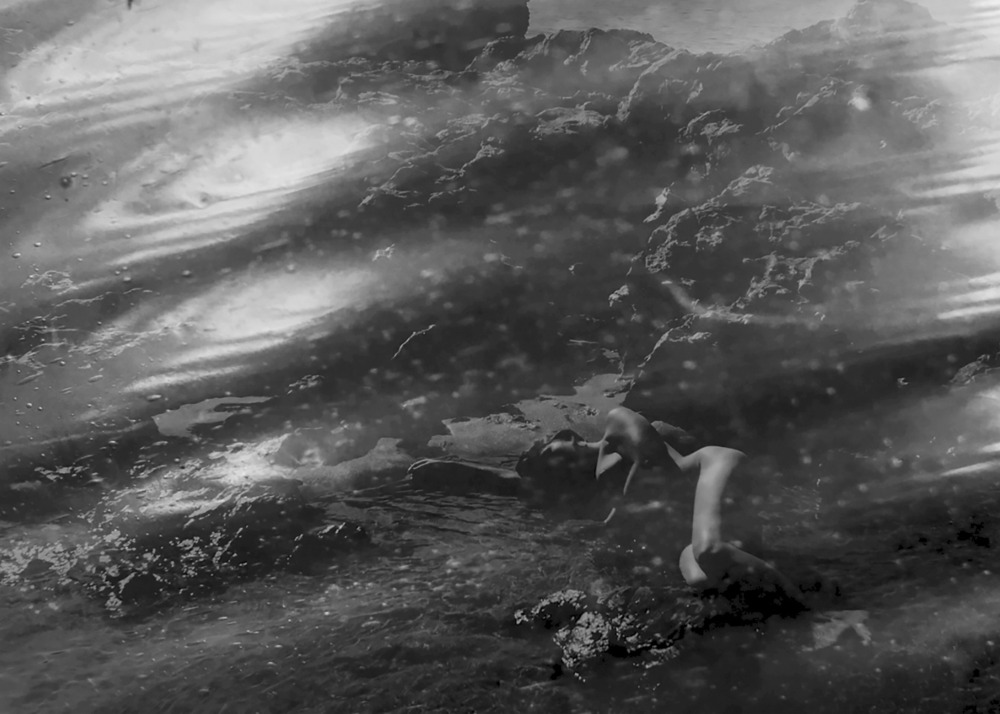
INSTALLATION 26
first performed on September 20, 2019
&NOW Points of Convergence, UW2-021 Dance Studio, Bothell, WA, Denver, CO
performed three times in 2019
EMMA GOMIS / JOSEPH STEELE
Julie Carr
Denver, CO
INSTALLATION 26
EMMA GOMIS / JOSEPH STEELE
Materials:
Felt (grey, one large rectangle 2’ x 6’, four 12” squares), hay, sawdust, broken glass, sewing needles, cloth, twine, gloves (two pairs, black), HD video, sound. 00:07:23.
Actions:
As our film played, we left our seats in the audience and walked slowly to the front of the room carrying cloth satchels in our flattened palms. Lit by the projection, we kneeled down in front of felt squares arranged at the cardinal points on the floor. In the center of the four squares, a larger rectangle. Moving with the intention of ritual, we unfolded the cloth packages and placed the sawdust, hay, broken glass, and sewing needles onto the squares. Once the satchels were emptied, we picked up two of the squares and switched their places, a new order. With the four squares each covered in a different material, we reclaimed our seats leaving the grey rectangle (grave, tub) empty.
Text:
Before its performative iteration, INSTALLATION 26 was conceived as a conceptual installation in Julie Carr’s book Real Life: An Installation. Carr sent us a list of unclaimed installations with an invitation to interpret one of them. This is the text we chose:
“A concrete room, lit only from an open square cut into the ceiling: moonlight, sunlight, rain. Concrete floor, walls and ceiling, very plain. In the center of the room, what could be a grave or a tub filled with two inches of water.
Lying in this bed, bath, grave, a woman. She has nothing on; maybe she sleeps. Concrete backless chairs: one at her head, one at her feet, one on each side. The first strewn with sawdust, the next with hay, third with broken glass, the last with sewing needles. Each day a new order. Each day a new woman in the pool.”
Process:
With the text keeping us company, we spent the summer traveling and filming in Catalonia and France. We searched for concrete rooms, we gathered sawdust and hay. We took off our clothes and lay in the shallows trying to sleep. When we got home, we put the footage together. This would serve as the lyric screen for our performance.
We thought about surveillance, how it inflected the conceptual piece in Carr’s initial form, the negative associations of the word, but also the pleasure of being watched. The performative and affective spaces that coalesce when someone is witnessing.